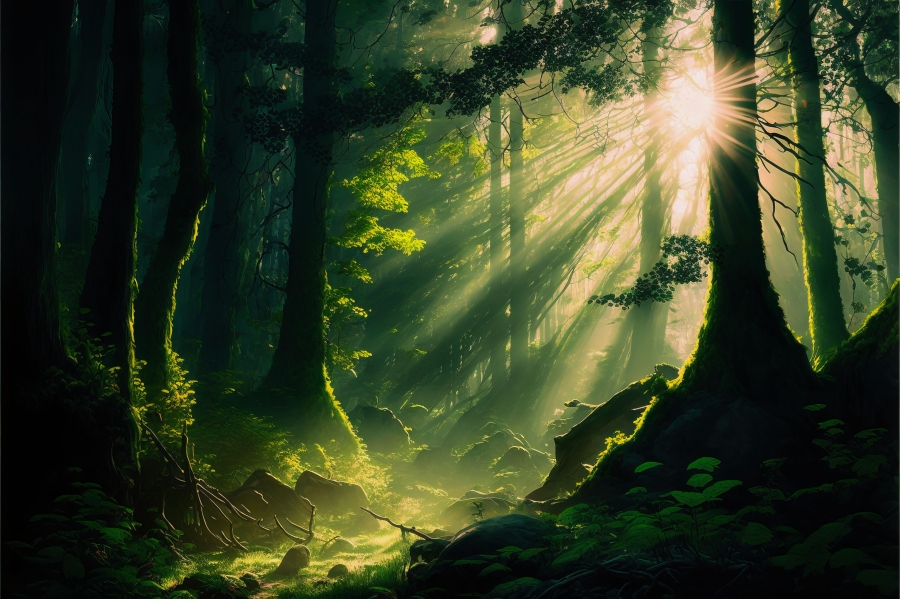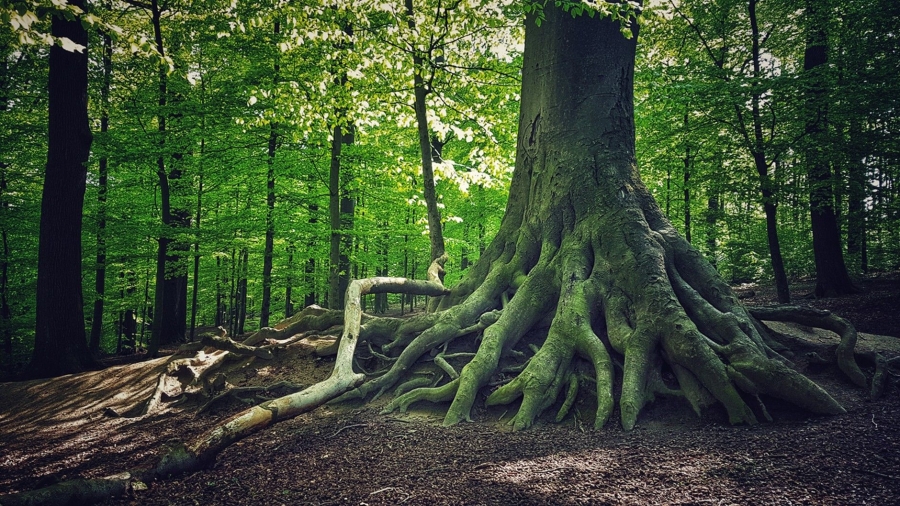"A tree is a being that is more spiritual than material". Omraam Mikhaël Aïvanhov
I have always loved trees. The gnarled trunk of an oak, the quirky baobab, the aristocratic redwood, the thorny resilience of an acacia. I love the smell of the forest, the fullness of its silence. Except that it isn’t silent. It’s not even still. Beneath my feet, the trees are “talking” to each other via interlinked roots, their fine hairs integrated into a complex fungal network that permeates the entire environment. These interlaced pathways allow the trees to share nutrients, alert each other to danger, and even help those who fall prey to disease. For the forest is not a collection of individual trees. It is a community. And that community is part of a greater ecosystem where each element relies on the other for its survival. The trees are stronger together. And none can fully function alone.
 Can we not learn from this? Are we not also creatures who function better when we are connected with others? And wouldn’t our global society finally be able to thrive if we all acted in the interests of the whole and not just for ourselves?
Can we not learn from this? Are we not also creatures who function better when we are connected with others? And wouldn’t our global society finally be able to thrive if we all acted in the interests of the whole and not just for ourselves?
The Wood Wide Web
More is being discovered about the astonishing influence of the network of fungi, or mycelium, that lies beneath the forest floor. The fungi and trees coexist in a beneficial symbiotic relationship, where the mycelium’s threadlike root structures run all through the soil, picking up nutrients and water for the trees, who in turn supply the fungi with sugars produced during photosynthesis. We don’t know exactly how, but the hairs of the trees’ roots and the threads of the fungus essentially converse, facilitating communication between the trees by acting as a “Wood Wide Web”. This allows them to send and receive chemical and electrical signals to each other, thereby enhancing their overall health, resilience and survival. It is as if the forest itself is an intelligent, beneficent entity.
Trees also routinely share resources with each other through the “fungal pipeline” during times of stress like drought or disease. And they don’t only share food with their own species. Some, like birch, even nourish competitors. Others, like acacia, release toxic gas to discourage predators from nibbling their leaves, warning neighbouring trees of the danger, who then release their own gas.

Natural fungus mycelium network texture closeup
There are other instances of trees working together. Many will halt the growth of their crowns where they touch trees growing next to them. It’s thought they do this to get more light and optimise photosynthesis. While this mostly happens among the same species, it can also occur between different species. Beeches, meanwhile, synchronise their growth and reproduction. They share nutrients and water, ensuring all reach maturity at the same time.
Forester and nature conservationist Peter Wohlleben points out in his book The Hidden Life of Trees that it is not in a forest’s best interest to lose its weaker members. Struggling or dead trees leave gaps and this disrupts the forest’s sensitive microclimate, impacting all the trees.
While trees are plainly not altruistic per se, I find these examples of cooperation inspiring. We will all of us have better chance of living a full life if we pull together and assist others in times of distress, if we make sure that everyone is doing okay. As forest life illustrates, sharing is not a loss for one. It’s a gain for all.
Mother Trees
Forestry scientist Dr Suzanne Simard discovered that, through the underground network, older "Mother Trees" act as central hubs, communicating and supplying the young seedlings around them with nutrients and hormones. In her long-term research initiative, The Mother Tree Project, Simard notes that “…in a single forest, a Mother Tree can be connected to hundreds of other trees.”
Because the larger, older trees are the most connected, their contribution to the overall functioning of the forest is of the greatest importance. By cutting down a Mother Tree, we remove not only the individual, but also the source of sustenance to and interaction with younger trees. This weakens the surviving trees and degrades the whole forest system.

Humans rely on forests for clean air and water, food, medicine, and climate regulation. Trees prevent soil erosion and regulate the water cycle by trapping sediments and pollutants. They provide habitats for wildlife and protect all creatures from the elements. They also improve our mental health by just being around them. With all these qualities they are like super-beings! And they’re essential to our survival.
This speaks to the value of maintaining natural forests to mitigate the effects of human interference and climate change. Yet we disrespect them and our planet by destroying them on an industrial scale. Don’t we realise that this is a self-inflicted wound from which we may never recover?
The struggle of the lone tree
In commercial forestry trees are planted far apart, evenly spaced. While this promotes their rapid growth, they are disconnected from each other. Unlike in a natural forest where there are trees of all ages, there is no Wood Wide Web to pass on messages or nutrients one to the other. And no Mother Tree to support them. This is also true of the single specimen in an urban environment. In dense forests, trees rarely overheat or struggle to photosynthesise. A lone tree might appear strong, but it is way more susceptible to strong winds or disease and often dies earlier than it its forest counterpart.
Likewise, although we humans can manage to survive on our own, we did not evolve to live in isolation. We need each other. And great and small, we need everyone to thrive. More than that we will only develop as the human race if we consider the entire planet as part of our community.
.jpg)
Interconnectedness is the key
The key lesson we can gain from trees is interconnectedness. We are all of us connected at every level: molecular, physical, spiritual. We are all part of the Earth itself. And like the fungal network and the forest, everything on it is interdependent. Each tree, each human is important. Everything relies on other parts of the chain of life to function. It is one extraordinary cycle. When we ignore this, we lose a part of ourselves. Like the lone tree, we are disconnected from ourselves, every other living creature, and even non-living things. But like Mother Trees, the more connected we are, the better everyone does. We become one when we act in the interests of the whole.
For the sake of ourselves, our communities and our planet, let’s learn from trees. Let’s restore our connections, acknowledge our oneness. For yes, we are deeply connected. We are one.
By Thérèse Barton
The views expressed in this article are not necessarily those of Spirit of the Rainbow.
Discover more about the ways we are connected with
We Are One - A Manifesto for Humanity
If you enjoyed this article, share it with a friend. And why not sign up for our newsletter?
Popular posts
You might also like
Email Newsletter Our latest articles and offers delivered straight to your inbox.
Our latest articles and offers delivered straight to your inbox.